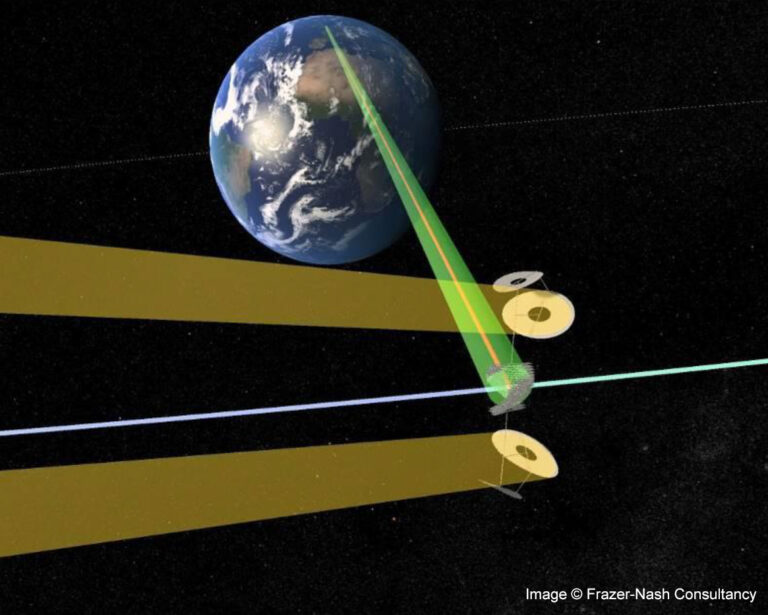
Meeting the timeline set out by the Government’s Net Zero pledge, and in partnership with other nations, the aim is to establish the first orbital demonstrator SBSP system by 2030, with the first of a kind operational system delivering power into the grid by 2040.
A constellation of Solar Power Satellites would be in operation by the mid 2040s, delivering a substantial proportion of the UK’s energy needs.
The benefits it offers include clean, continuous base-load energy, with much lower land usage than conventional renewables. It could provide a substantial percentage of the UK’s energy needs in future, as part of a mix of energy technologies.
Solar Power Satellite designs are well advanced in several nations and the UK Government has confirmed the engineering feasibility of the concept through an independent study.
A typical system comprises a constellation of massive, kilometre scale satellites in GEO. Each has very lightweight solar panels and a system of mirrors to concentrate sunlight onto the panels, generating around 3.4 GW of electricity on the satellite. This is converted into RF microwave radiation, with an efficiency of 85%. The microwave frequency proposed is typically 2.45GHz to be transparent to the atmosphere and moisture, and a net 2.9 GW of power is beamed to a receiving antenna at a fixed point on the ground below.
A secure pilot beam is transmitted from the ground to the satellite to allow the microwave beam to lock onto the correct point. The ground rectifying antenna or ‘rectenna’ converts the electromagnetic energy into direct current electricity and then through an inverter which delivers a net 2 GW of AC power into the grid.

The angle between the solar collector and the microwave transmitter is constantly changing as the earth rotates. Thus if the mirrors are always pointed towards the sun, the microwave beam is steered to always point at the correct location on the earth. In this way the system can deliver full power levels day and night, in all weathers, and all year round.
The intensity of the microwave beam is around 240 W/m2, which is about one quarter of the intensity of mid-day sunlight. So the system cannot be used as a beam weapon, nor is it harmful to life on earth.
The Solar Power Satellite (SPS) weighs several thousand tonnes, and the specific power in kW per kg is a key parameter for estimating both the cost of hardware and its deployment into GEO. Estimates for leading SPS designs independently calculate the Levelised Cost of Electricity (LCOE) at less than £5 per MWh.
SBSP is challenging because of the sheer scale of infrastructure being deployed in space. Many of the underlying technologies are considered relatively mature, and the physics of power collection and beaming is well understood. The reducing cost of space launch is making the concept increasingly affordable, and the latest modular SPS concepts are designed for industrial scale manufacture and robotic assembly. These attributes are key to achieving a competitive LCOE.
SBSP offers a range of characteristics which could help the UK deliver Net Zero, with a new source of abundant, sustainable, base load power. It will help to ensure grid stability, it is affordable, and offers a secure and sovereign supply of clean energy.
© Space Energy Initiative 2024
Website by Eldo™